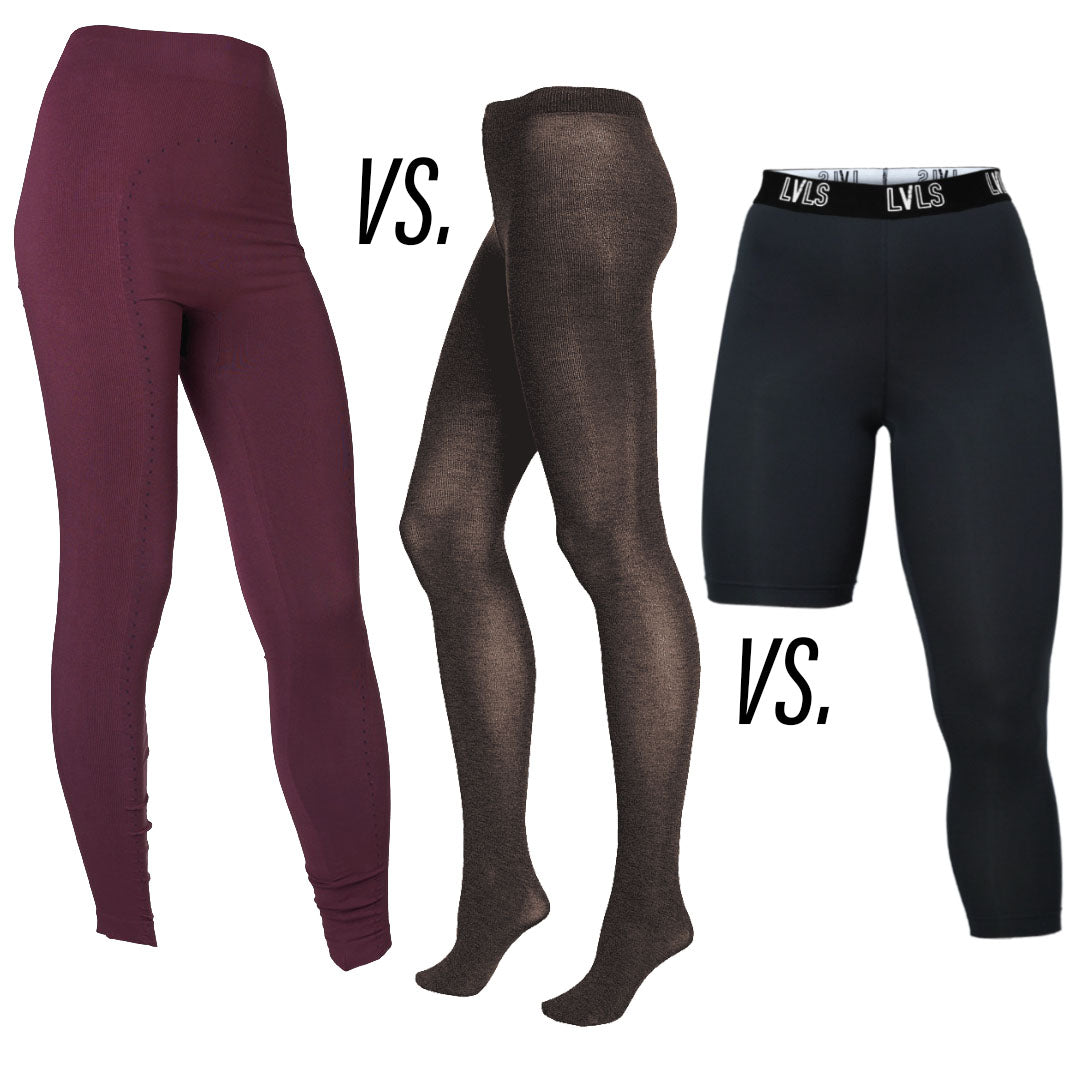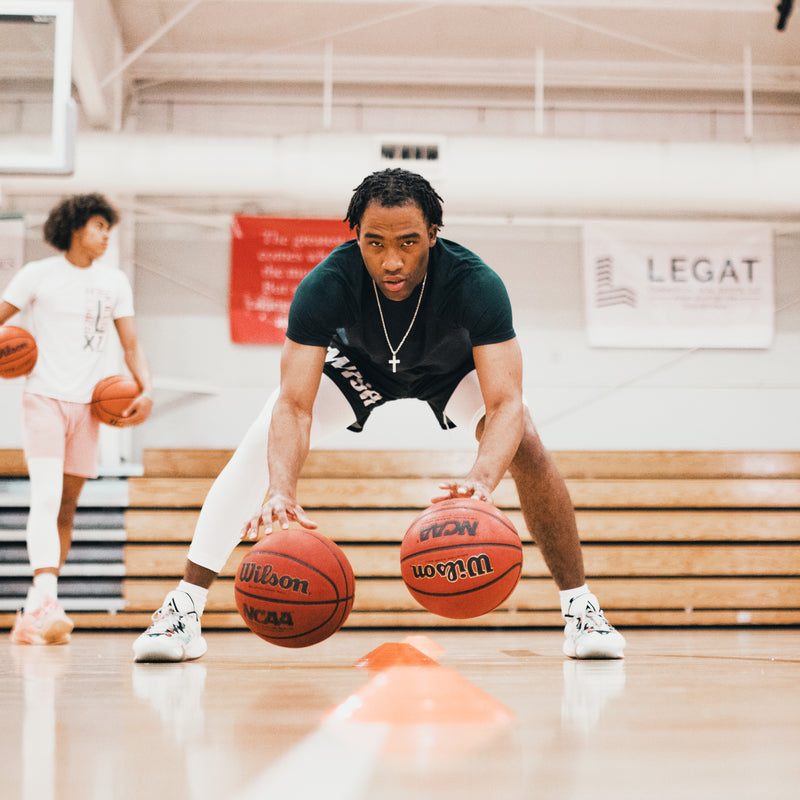When it comes to comfortable, yet functional athleticwear, you may have heard the terms tights, leggings, and compression pants used interchangeably, especially amongst athletes. All of these garments have a lot in common, but they also have some key differences that can affect how you wear them. Let’s dive into what each of these terms mean and what the major differences are so you can make an informed decision next time you go shopping.
Definition of Tights, Leggings, and Compression Pants
What are Tights?
Tights are often made of a thin and stretchy material like nylon or spandex and are often referred to as hosiery. Most tights are designed with an elastic waistband and a foot covering, much like a very thin sock. Their main purpose is to provide extra warmth and coverage underneath other types of clothing like skirts or dresses, but more recently they have been engineered to also deliver greater support and elicit a smoother silhouette of the wearer.
What are Leggings?

(Search trends for "leggings" in red and "tights" in blue since 2004)
With the increasing demand for athleisure, it’s no surprise that the term “leggings” surpassed that of “tights” in search popularity all the way back in September 2011 (via Google Trends). Leggings are another skin-tight garment that covers the legs and waist, often made with a variety of materials including cotton, polyester, and spandex. Designed with a variety of waistband styles - high waisted to low-rise - it’s understandable why so many women choose to wear these far more comfortable bottoms over traditional pants. Some sportier designs are even made with increased compression, contributing to muscle support and recovery while exercising.
What are Compression Pants?
Compression pants derive their name from exactly what they were designed for - to increase the compression of an outfit. Alternatively referred to as compression tights, they are engineered to deliver a greater amount of pressure to the legs, helping reduce muscle fatigue, improve blood flow, and prevent future injuries through quicker muscle recovery. Typically designed with anti-odor properties, moisture-wicking technology, and even UV protection through the use of specialized fabrics, compression tights are commonly marketed to fitness enthusiasts and athletes.
What’s the Difference Between Leggings, Tights, and Compression Pants?
Tights vs. Leggings
While tights, leggings, and compression pants may look similar, each have some very unique properties and target markets that evoke important differences between them. If we start by comparing tights vs. leggings, tights are much more sheer and made of a thinner material than leggings, often causing them to be marketed towards women who require layering underneath certain outfits. Tights also have a foot covering while leggings stop just above or below the ankle. Today, it’s not very difficult to find leggings with a wide range of waistband styles while tights typically come with a simple elastic waistband.
Leggings vs. Compression Pants
When comparing leggings to compression pants, it’s important to recognize the intended use. Compression tights are specifically designed for more athletic activities because they provide a higher level of pressure to each leg, while leggings (and tights) are more versatile as they can be worn for a much wider range of occasions. Leggings are also commonly designed for lower impact exercise, but are still valued heavily by today’s fitness influencers and gym goers. It is also quite common to see an individual walking down the street in just a pair of leggings, while compression pants are commonly worn with shorts on top and tend to only be found in gyms or on an athletic field/track.
Taking compression pants a step further, Single Leg Tights are a recent invention that offer an even more stylish look to an already popular garment. As a more functional alternative to traditional leg sleeves, Single Leg Tights have become the go-to product for modern athletes looking to pull off an asymmetrical look without having to worry about constant leg sleeve adjustments during game-play. Both compression pants and Single Leg Tights are commonly worn as base-layers. Like tights, they too tend to come in a simple, yet comfortable waistband style, unlike the multitude of designs often seen with leggings.
Tights vs. Compression Pants
While both tights and compression pants are designed to deliver a tight fit around the legs, the latter tends to be made with a material that has a greater GSM (grams per square meter), thus providing more pressure. The other major difference between tights and compression pants is their target market and intended use. Compression gear is often sold to athletes looking for added health benefits while tights are commonly worn for a wider range of occasions, from casual wear to formal events.
Whether you’re shopping for your next pair of basketball compression pants or simply looking to learn more about the difference between tights, leggings, and compression gear, we hope this article was helpful! All three garments offer a lot of benefits with a wide range of outfits and styles, so it really comes down to the activity you’re intending to use them for. Have a night out planned and need some added warmth underneath a skirt? Tights are the right choice. Running some errands and want to feel comfortable, yet mobile? Leggings are our recommendation! Looking for athletic base-layers that can also elevate your style? Definitely check out compression pants or our Single Leg Tights for a more modern look!


